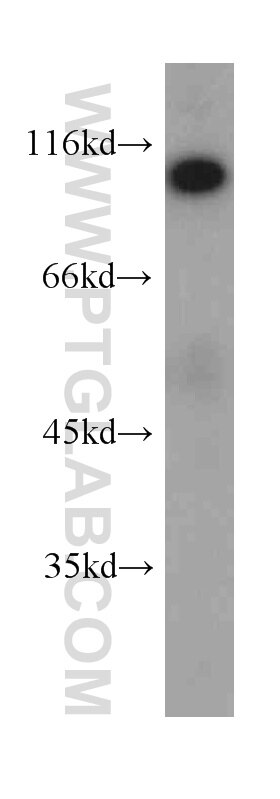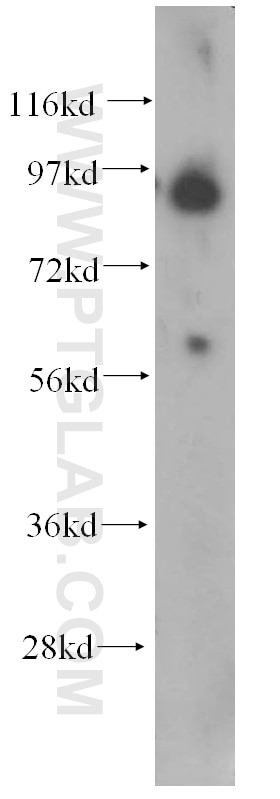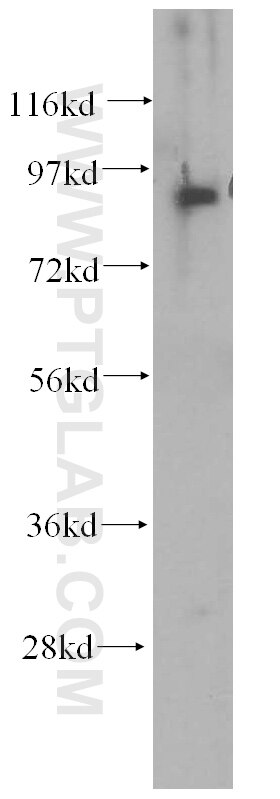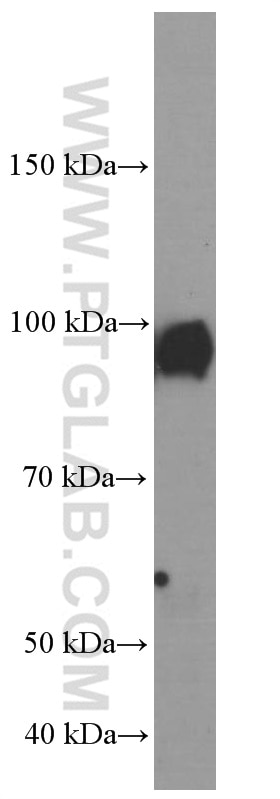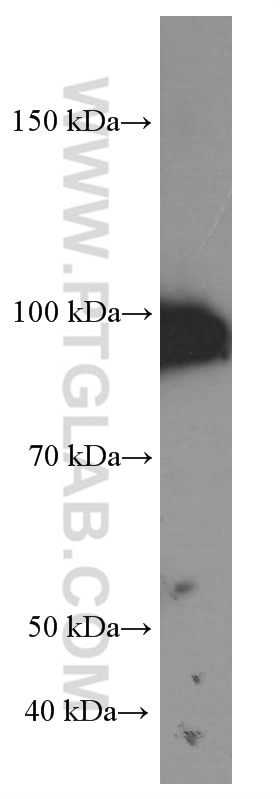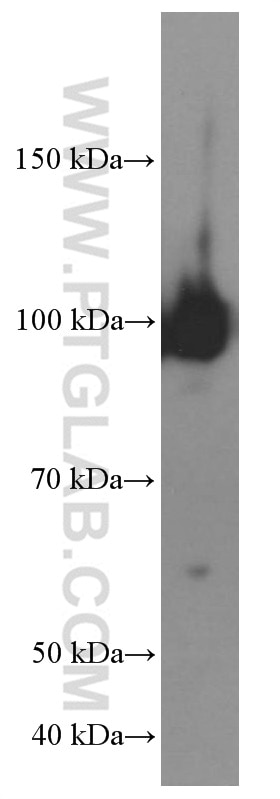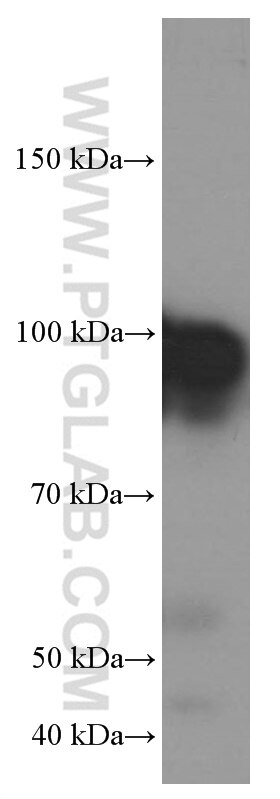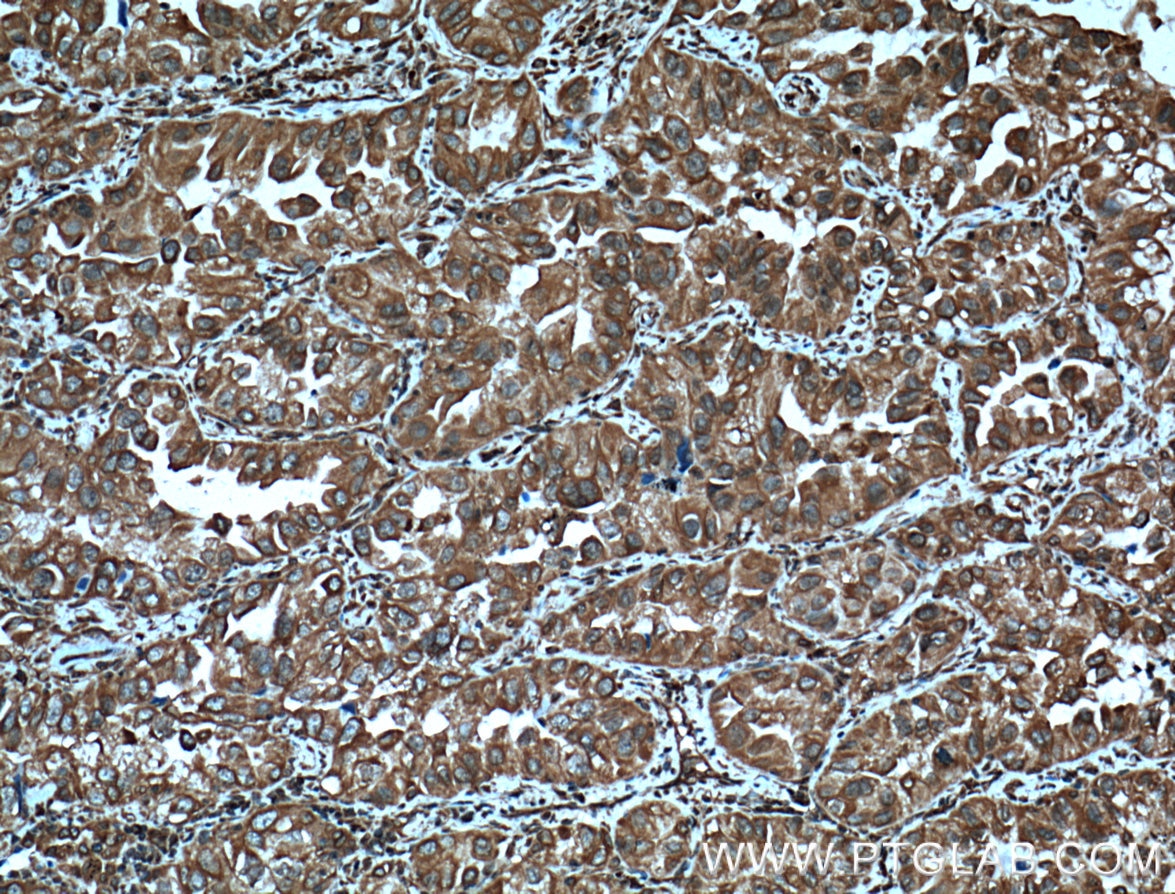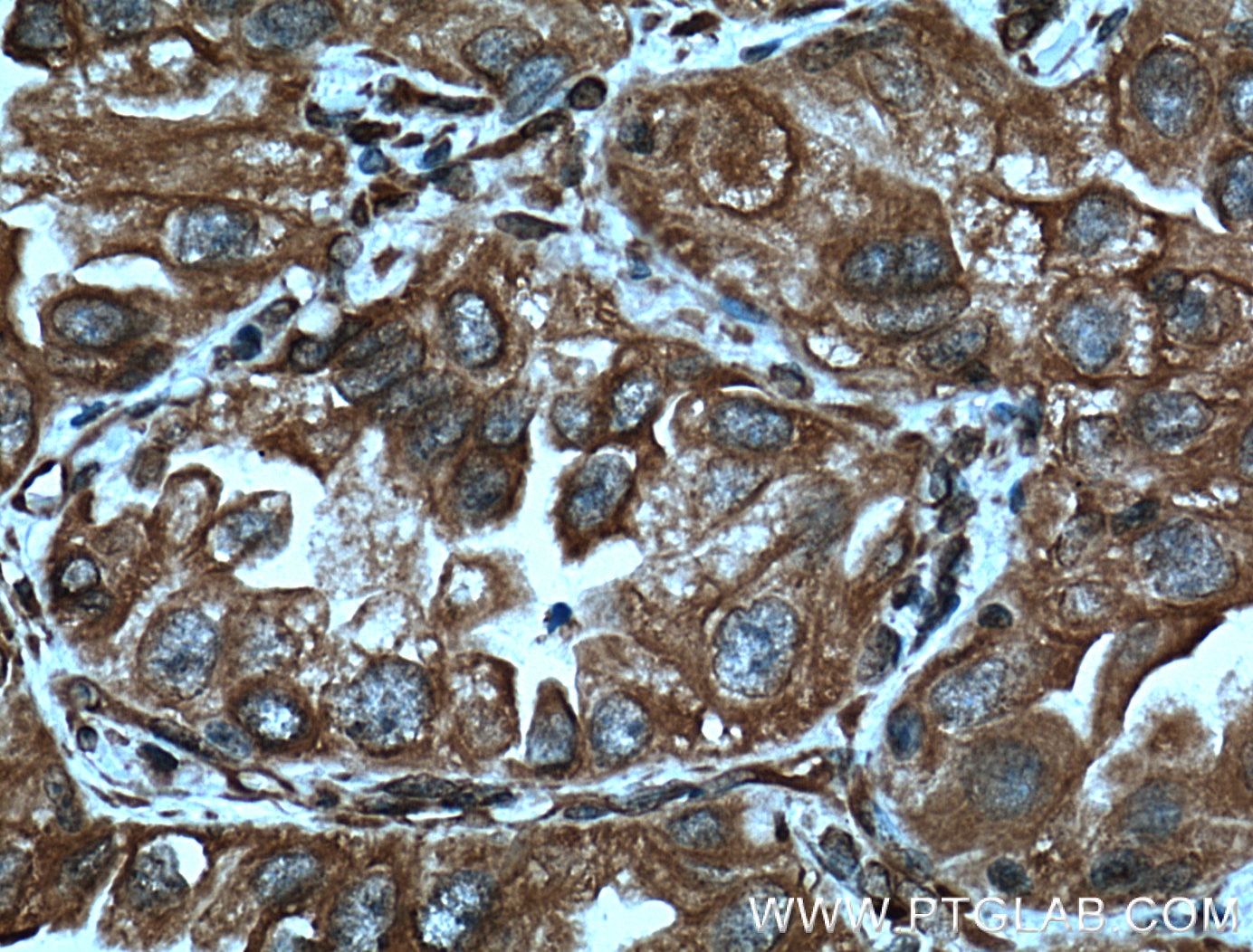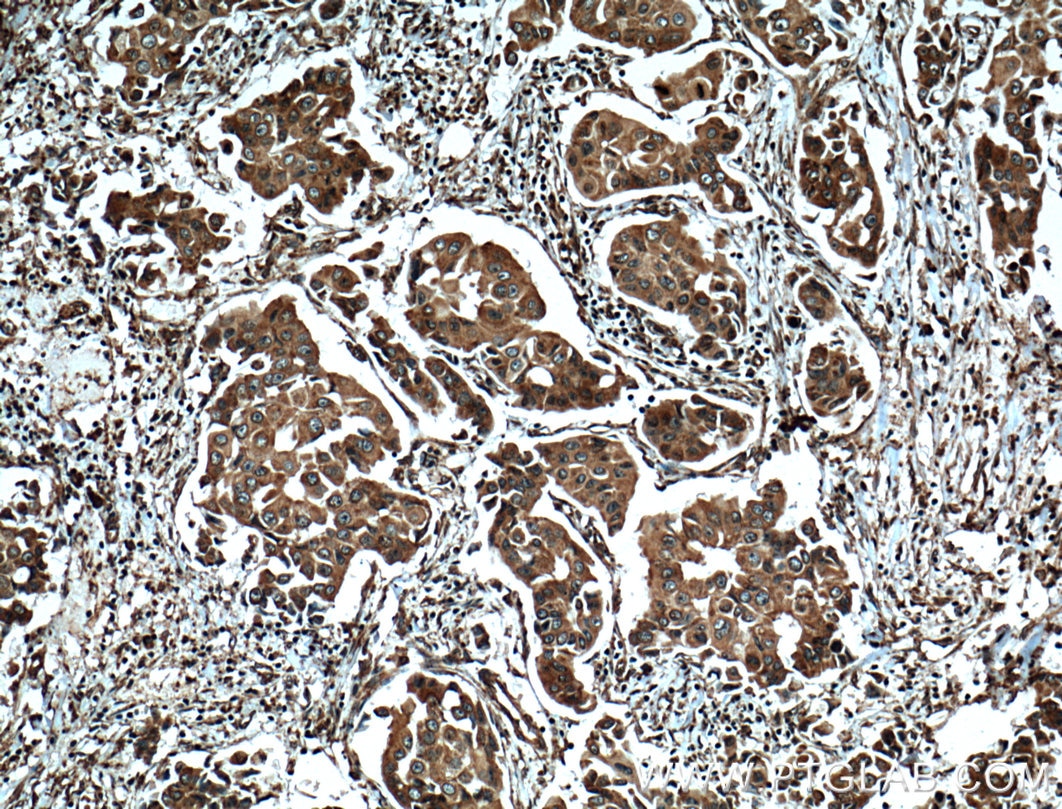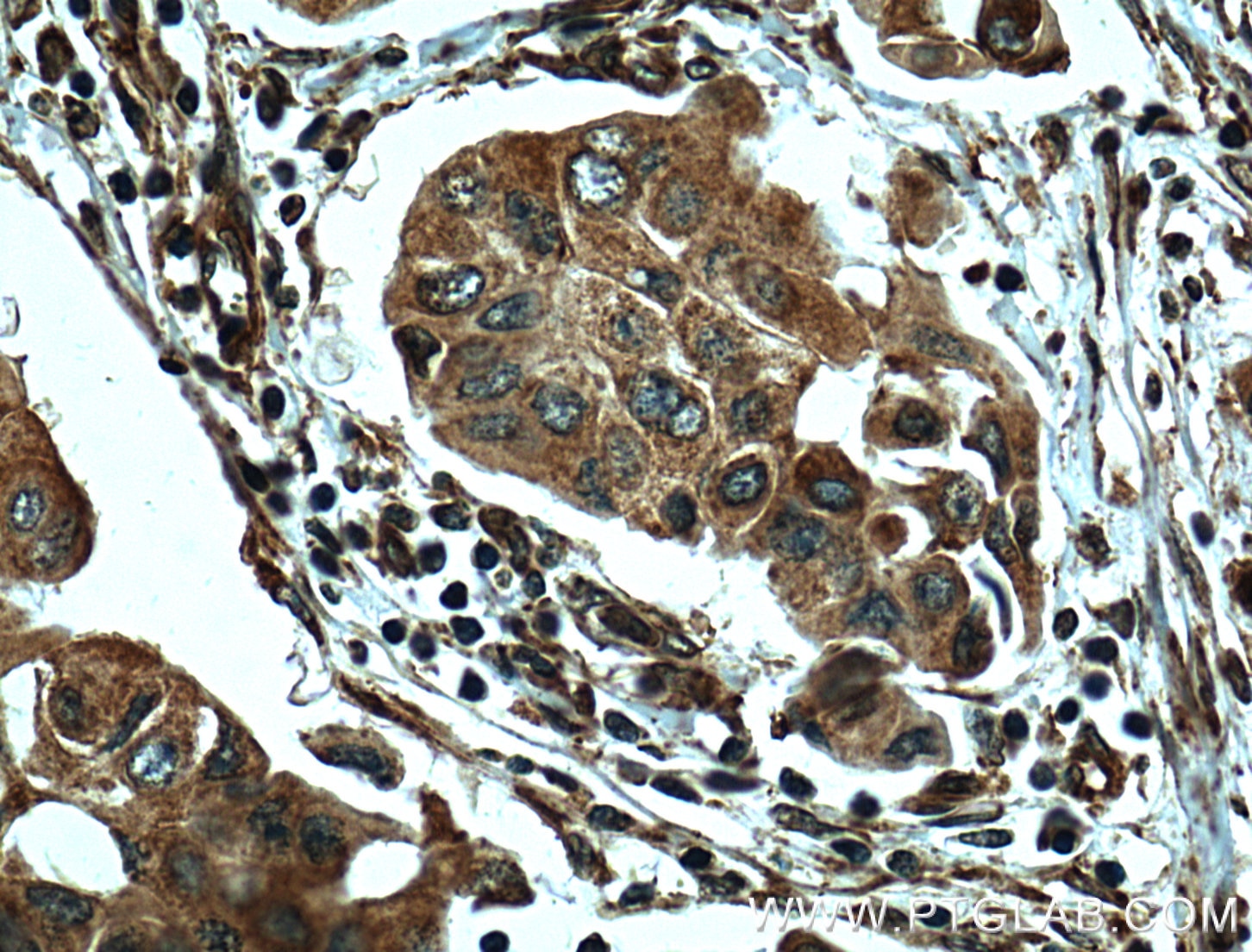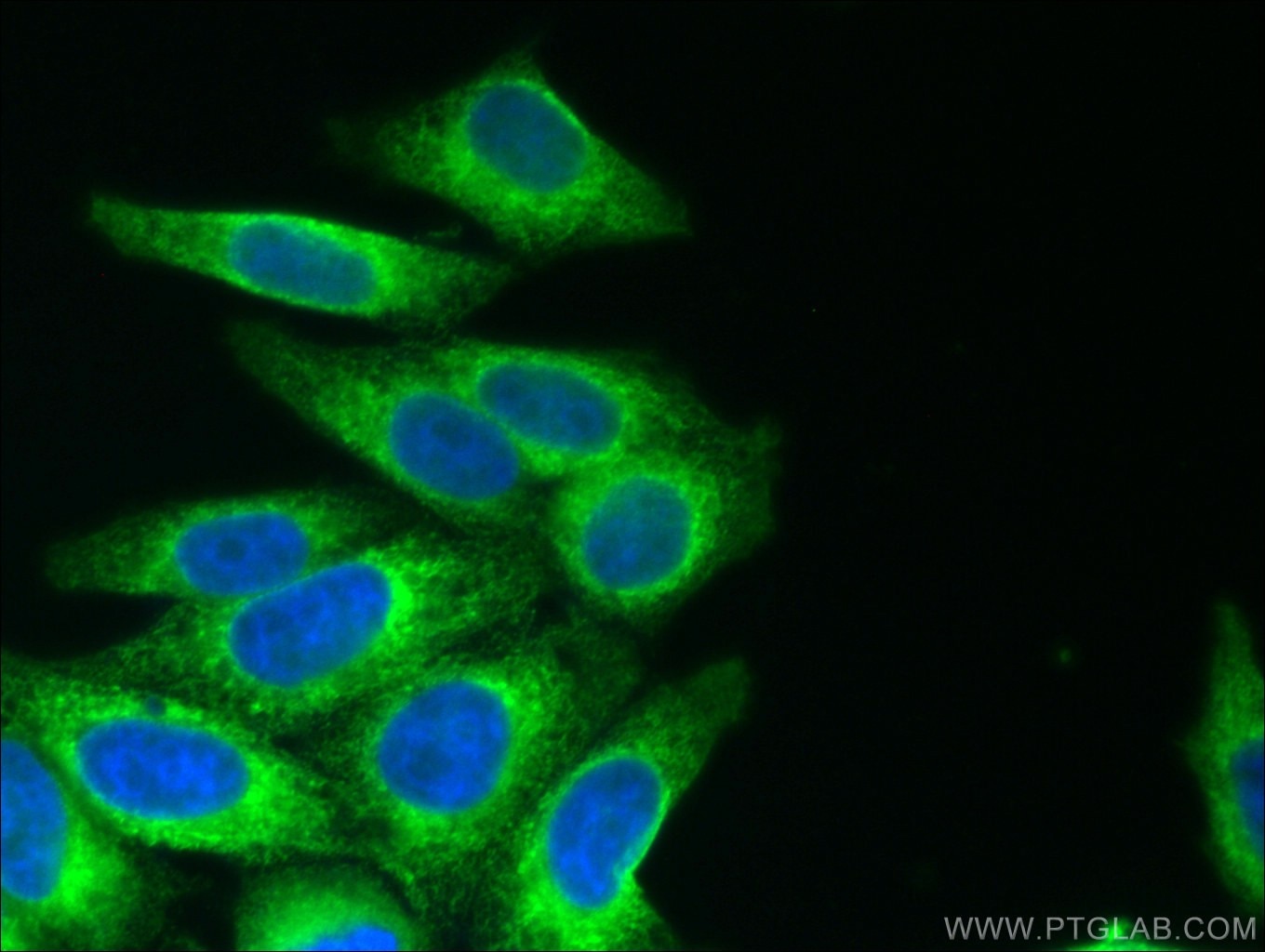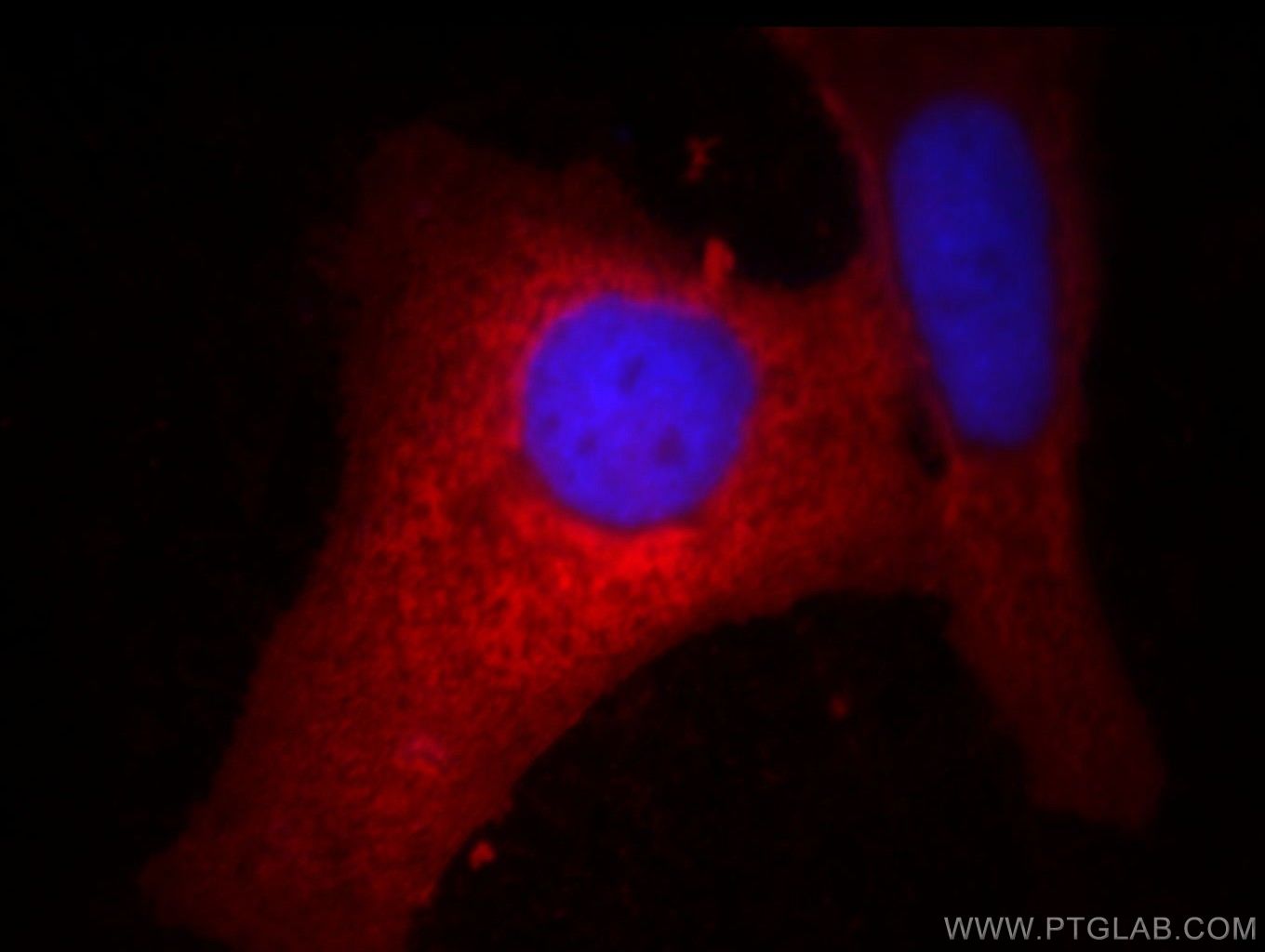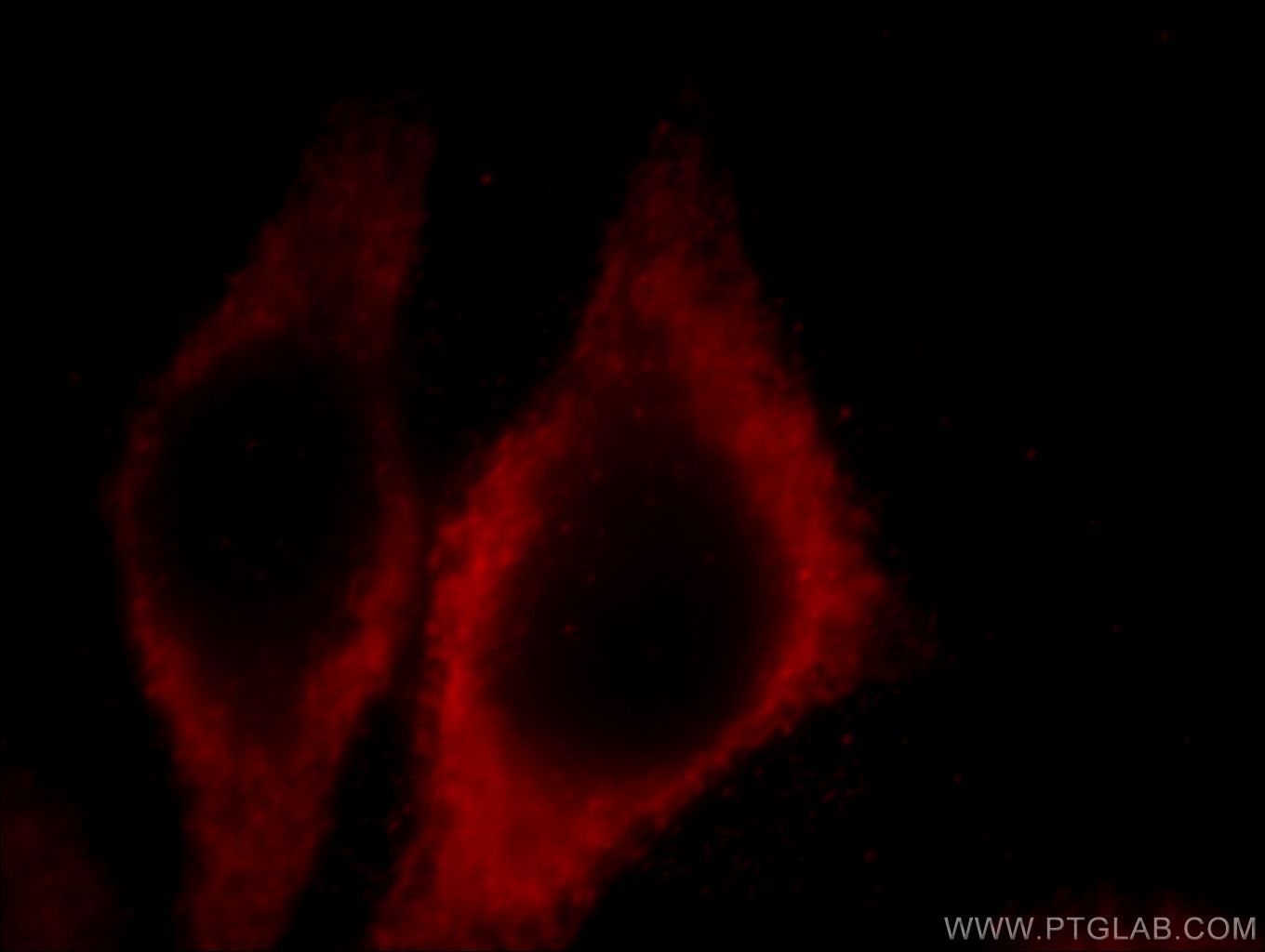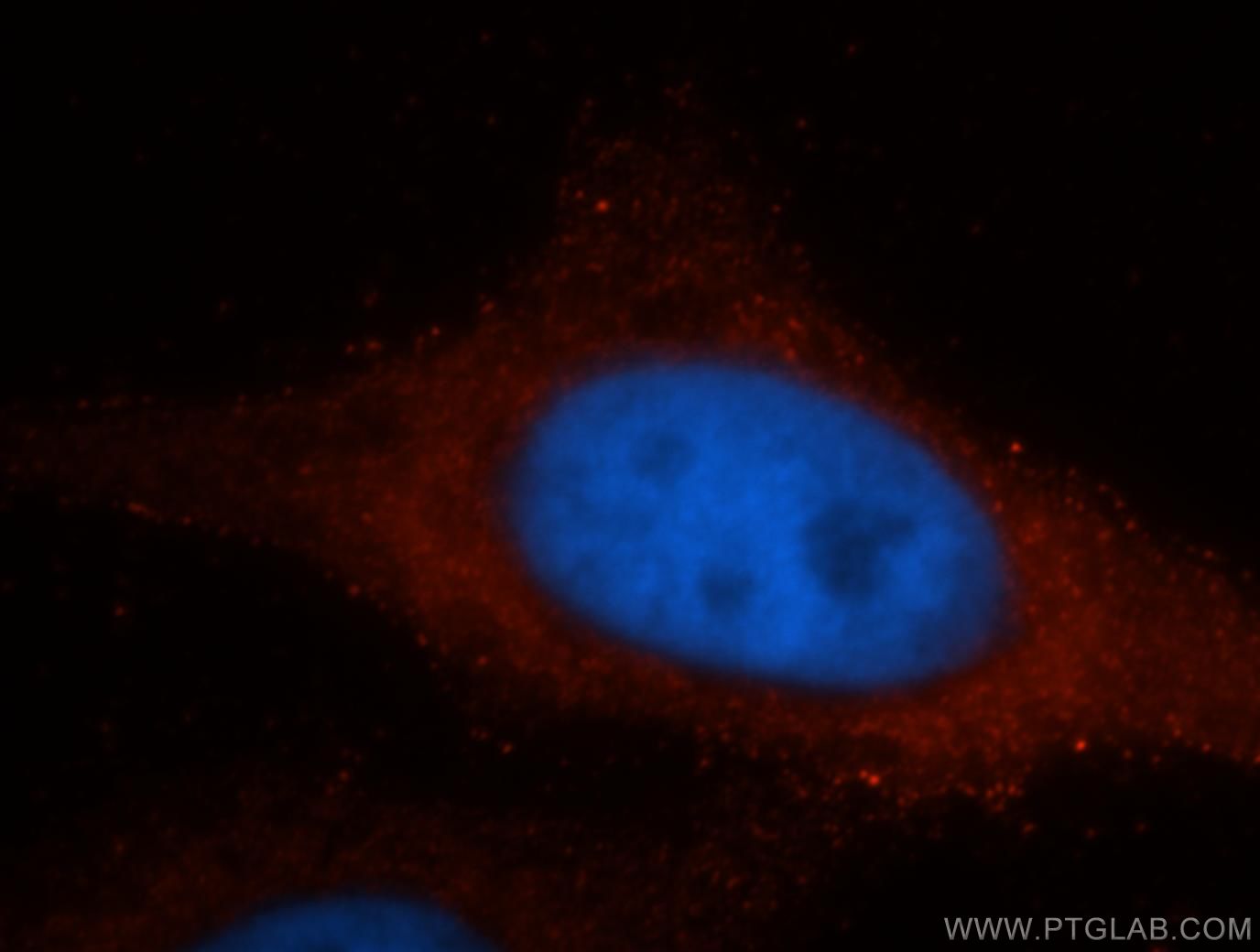GRP94 Monoklonaler Antikörper
GRP94 Monoklonal Antikörper für WB, IF, IHC, ELISA
Wirt / Isotyp
Maus / IgM
Getestete Reaktivität
human, Maus, Ratte
Anwendung
WB, IHC, IF/ICC, CoIP, ELISA
Konjugation
Unkonjugiert
CloneNo.
1H10B7
Kat-Nr. : 60012-1-Ig
Synonyme
Geprüfte Anwendungen
| Erfolgreiche Detektion in WB | Human heart, humanes Herzgewebe, humanes Lebergewebe, humanes Lungengewebe, NIH/3T3-Zellen, RAW 264.7-Zellen, ROS1728-Zellen |
| Erfolgreiche Detektion in IHC | humanes Lungenkarzinomgewebe, humanes Mammakarzinomgewebe Hinweis: Antigendemaskierung mit TE-Puffer pH 9,0 empfohlen. (*) Wahlweise kann die Antigendemaskierung auch mit Citratpuffer pH 6,0 erfolgen. |
| Erfolgreiche Detektion in IF/ICC | HepG2-Zellen, HeLa-Zellen, MCF-7-Zellen |
Empfohlene Verdünnung
| Anwendung | Verdünnung |
|---|---|
| Western Blot (WB) | WB : 1:500-1:2000 |
| Immunhistochemie (IHC) | IHC : 1:50-1:500 |
| Immunfluoreszenz (IF)/ICC | IF/ICC : 1:50-1:500 |
| It is recommended that this reagent should be titrated in each testing system to obtain optimal results. | |
| Sample-dependent, check data in validation data gallery | |
Veröffentlichte Anwendungen
| WB | See 5 publications below |
| CoIP | See 1 publications below |
Produktinformation
60012-1-Ig bindet in WB, IHC, IF/ICC, CoIP, ELISA GRP94 und zeigt Reaktivität mit human, Maus, Ratten
| Getestete Reaktivität | human, Maus, Ratte |
| In Publikationen genannte Reaktivität | human, Maus, Ratte |
| Wirt / Isotyp | Maus / IgM |
| Klonalität | Monoklonal |
| Typ | Antikörper |
| Immunogen | GRP94 fusion protein Ag1439 |
| Vollständiger Name | heat shock protein 90kDa beta (Grp94), member 1 |
| Berechnetes Molekulargewicht | 96 kDa |
| Beobachtetes Molekulargewicht | 95 kDa |
| GenBank-Zugangsnummer | BC009195 |
| Gene symbol | GRP94 |
| Gene ID (NCBI) | 7184 |
| Konjugation | Unkonjugiert |
| Form | Liquid |
| Reinigungsmethode | Caprylsäure- Ammoniumsulfat-Präzipitation |
| Lagerungspuffer | PBS with 0.02% sodium azide and 50% glycerol |
| Lagerungsbedingungen | Bei -20°C lagern. Nach dem Versand ein Jahr lang stabil Aliquotieren ist bei -20oC Lagerung nicht notwendig. 20ul Größen enthalten 0,1% BSA. |
Hintergrundinformationen
HSP90 proteins are highly conserved molecular chaperones, which normally associate with other cochaperones and play important roles in folding newly synthesized proteins or stabilizing and refolding denatured proteins after stress. HSP90B1 (GP96 or GRP94) is an endoplasmic reticulum paralogue of the cytosolic HSP90. As a major ER chaperone to mediate the UPR and a master chaperone for Toll-like receptors (TLRs), HSP90b1 chaperones peptides to MHC class I molecules of dendritic cells and other antigen-presenting cells, as well as facilitating the assembly of immunoglobulin. The protein is also involved in many other bio-processes. This antibody was generated against the N-terminal region of full-length HSP90b1.
Protokolle
| PRODUKTSPEZIFISCHE PROTOKOLLE | |
|---|---|
| WB protocol for GRP94 antibody 60012-1-Ig | Protokoll herunterladen |
| IHC protocol for GRP94 antibody 60012-1-Ig | Protokoll herunterladenl |
| IF protocol for GRP94 antibody 60012-1-Ig | Protokoll herunterladen |
| FC protocol for GRP94 antibody 60012-1-Ig | Download protocol |
| STANDARD-PROTOKOLLE | |
|---|---|
| Klicken Sie hier, um unsere Standardprotokolle anzuzeigen |
Publikationen
| Species | Application | Title |
|---|---|---|
Autophagy Influenza M2 protein regulates MAVS-mediated signaling pathway through interacting with MAVS and increasing ROS production. | ||
Front Cell Dev Biol Extracellular Vesicles Carry lncRNA SNHG16 to Promote Metastasis of Breast Cancer Cells via the miR-892b/PPAPDC1A Axis. | ||
Cancer Sci Inhibition of heat shock protein 90 destabilizes receptor tyrosine kinase ROR1 in lung adenocarcinoma. | ||
Neurochem Res Novel Role of HAX-1 in Neurons Protection After Spinal Cord Injury Involvement of IRE-1. | ||
J Adv Res Development of a novel thymidylate synthase (TS) inhibitor capable of up-regulating P53 expression and inhibiting angiogenesis in NSCLC. | ||
